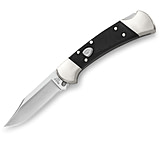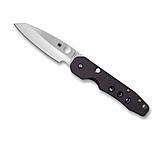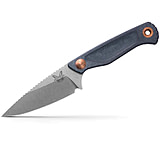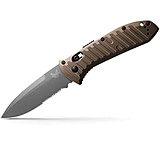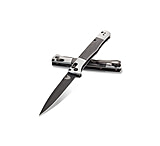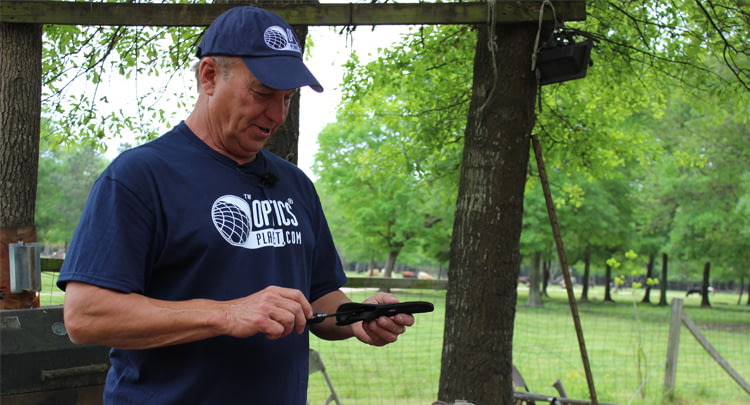
![]()
My name is Keith Warren, and I host a program called the High Road. For over 30 years I've traveled the world hunting big game, and I'm here to talk to you about knives.
As a big game hunter, I've always got to have sharp knives with me. They're my tools to get the job done. Since they're tools, I like to use the right one for the job and different hunting tasks require different knives.
Fixed Blade Knives for Field Dressing
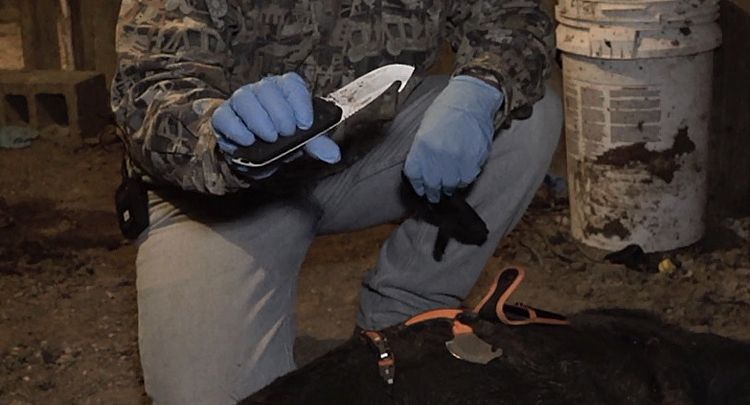
Now this kind of gets into user preference, but I prefer a fixed blade knife that is 3" to 4.5" size. Why? Just like you wouldn't bring a .338 Lapua rifle to hunt a squirrel, bringing some massive knife is almost always unwieldy and useless. This is especially true for what I most often need my knives for - skinning.
The reason I like a blade like the one pictured above is it has a nice belly to it for slicing back thick layers of connecting tissue, and yet has a solid, controllable tip for fine detail work. The real kicker, for me at least, is the gut hook at the top of the blade. For years, hunters have had to delicately make our body cavity cuts with an upward facing blade and a lot of precision, so as to not cut any of the animal's internal organs. However, with the advent of the guthook and its reverse facing blade, you can quickly make incisions from belly to sternum without worrying about cutting any of the delicate internals. Which is especially important if you're a new hunter that recently learned how to field dress a hog or deer, as you won't accidentally spoil the meat before you get home.
Replaceable Blade Knives for Field Dressing Large Game
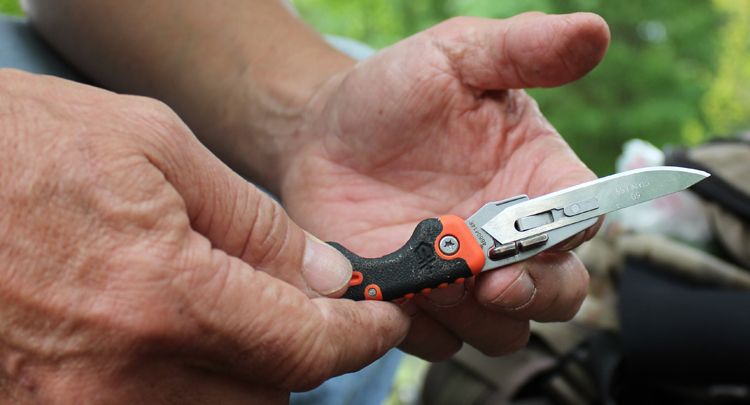
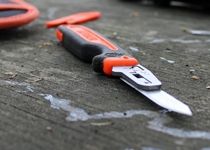 Every big game hunter should carry a good sharp knife with him. A sharp knife is a lot safer than a dull knife, as you won't have to struggle when making cuts, reducing the likelihood of an accident. But if you're like me, you have difficulty sharpening knives or you don't want to sharpen a knife, there are knives out there today that you don't have to sharpen. Instead, they come with super sharp replaceable blades that you just snap in.
Every big game hunter should carry a good sharp knife with him. A sharp knife is a lot safer than a dull knife, as you won't have to struggle when making cuts, reducing the likelihood of an accident. But if you're like me, you have difficulty sharpening knives or you don't want to sharpen a knife, there are knives out there today that you don't have to sharpen. Instead, they come with super sharp replaceable blades that you just snap in.
These replaceable blades come in a nice foil wrapper to protect you from their surgically sharp edge. Now no matter what I'm doing, whether I'm on the side of a mountain working on a moose, deer, sheep, or elk; I always carry brand new blades for my knife. Why? It's simple: once one gets dull I can quickly switch it out for a new sharp one in the field. It takes just a few seconds, and it's like I'm starting over with a brand new knife.
Pro Tip: I see a lot of hunters that don't respect these replaceable knives, and fail to pay attention when they change out the blades. I urge you to please be extremely careful when swapping out these blades. They are razor sharp, and you can quickly and easily have yourself a nice cut and not even realize it till you see blood running down your hand.
Large Skinning Knife for Field Dressing

Depending on the size of the game you're hunting, a large skinning knife like this one above can make field cleaning an animal like an elk or moose a lot easier. While the smaller fixed blade earlier is perfect for your average game, the "T" handle of this skinner gives you much more power when pulling the gut hook through larger animals.
Some of these bigger animals have really tough tissue connecting their skin and muscle, and the belly of the blade in combination with the leverage of the t-handle allow you to make nice big cuts through this tissue. Of course you could do this with a smaller knife, but it would take a bit more work which means more time. And when dealing with meat that we plan on keeping, time is the enemy so anything to save time is BIG.
Knife Blades for Every Purpose

When it comes to knives, I like the K.I.S.S. principle (keep it simple stupid). Because I follow this mantra, I don't carry unnecessary or impractical Crocodile Dundee knives on me. When I go out on a hunt, my knife needs to get the job done and that's it! With these three types of knives, you'll be able to get 99.9% of what you need to do done.










